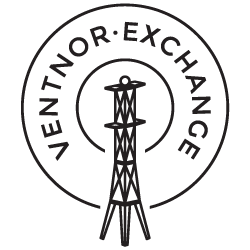Ventnor Exchange aims to foster and develop a unique creative community and economy on the Isle of Wight. An innovative creative hub combining a theatre, record store and bar.
Brand Identity
Understanding our brand and how to communicate it means that we can speak with confidence and present a unified image for the Exchange, our Festivals and other projects. A consistent style, tone of voice and use of the Exchange visual identity makes us instantly recognisable and strengthens our reputation both on the Island and our wider audiences.
In this guide you will find the tools and advice you need to create effective, audience-focused, on-brand content. As well as the guidelines, you’ll find downloadable logos, branded templates, copywriting rules and information about our online photo storage resources and file sharing workflows.
Brand Principles
We are open
We must always be open, we must never feel exclusive
i.e. we should adhere to the plain english campaign, wc3 guidelines of accessibility, value users contributions, make the website clear and easy read
[su_spoiler title=”This could look like”]
- A website which will be open to all, users, front end, back end
- Open social discussion on our website
- Ensure language is clear and succinct
- Friendly, diverse people focused imagery where possible. Clear understanding of what an image is communicating.
- Open data model
- Continually user test and iterate our design and development of work. Publish all findings and invite the public to be part of the process.
- Typography styles set to upper and lower case, rather than caps to enable web friendly reading, ensuring legibility and accessibility, using large type, high contrast
[/su_spoiler]
We are dynamic
We must always be transformative, we must never feel stale or unimaginative.
i.e. we should always question our process, output and direction of work, change the way the organisation and public interact with the Exchange online and in print. Be agile.
[su_spoiler title=”This could look like”]
- Fluent design ‘language’ and set of features/modules (rather than set of fixed templates) to allow for changing organisational needs
- Design should be minimalist and take a back seat, and content (which is ever changing, engaging) should be brought to the fore at all times. Substance over style.
- Always challenging the language we use. Is it old fashioned? Has the world moved on? Should our editorial style guide be adapted to meet new requirements?
- Keeping consistent messaging at the forefront of the website explaining our process, and inviting input (feedback button, beta website message)
- Openly take risks and try new technologies and methods, blog about our experiences both positive and negative
- Trial and test progressive techniques ie responsive and device independent
[/su_spoiler]
We are exciting
We must always surprise our users with chance encounters, we must always introduce them to new content.
i.e. users should be able to bump into art and experiences online, just as they do on site. They should feel a sense of exploration and surprise. Not feel events are being sold to them.
[su_spoiler title=”This could look like”]
- Use of bright clear highlight colours for interactions, signposting to guide the user but not overwhelm them
- Enable explorative user journeys (taxonomy, tag driven, related content etc)
- Content designed as user wants, not organisational agenda (this might cross over at times)
- Delight and entertain users with well thought out and easily findable content
- Dynamic user focused elements on the site
[/su_spoiler]
We are open
We must always be open, we must never feel exclusive
i.e. we should adhere to the plain english campaign, wc3 guidelines of accessibility, value users contributions, make the website clear and easy read
[su_spoiler title=”This could look like”]
- A website which will be open to all, users, front end, back end
- Open social discussion on our website
- Ensure language is clear and succinct
- Friendly, diverse people focused imagery where possible. Clear understanding of what an image is communicating.
- Open data model
- Continually user test and iterate our design and development of work. Publish all findings and invite the public to be part of the process.
- Typography styles set to upper and lower case, rather than caps to enable web friendly reading, ensuring legibility and accessibility, using large type, high contrast
[/su_spoiler]

